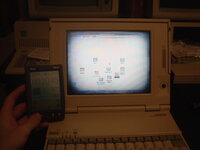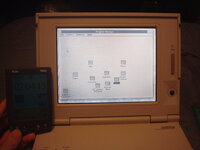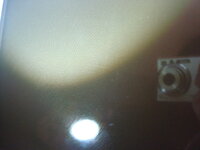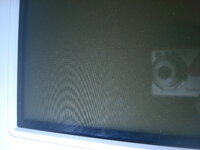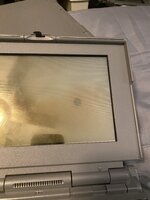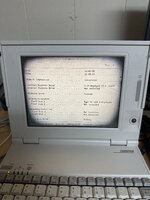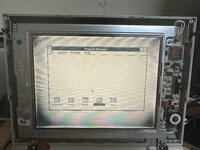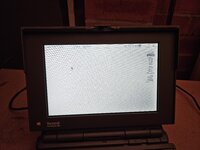This is not a PowerBook, but still a Hosiden mono active LCD so I will post this here.
I recently baked the Hosiden panel on my Compaq LCD Elite 4/25e with overall VERY good results!
Here’s a before and after. First pic is after 20 minutes, and the second pic is after 2 HOURS!
View attachment 75700
View attachment 75701
Using my Palm III as a timer!
A side affect of this is it caused lots of “checking” cracks all over the polarizer. Not a huge issue as the polarizer film can be replaced and it’s not really noticeable when the system is powered on anyway.
I tried to get some photos but it was hard.
View attachment 75702
View attachment 75703
You can just barely see the cracks. The polarizer is also noticeably more “glossy” than it was.
I also have some stuff to share about the PowerBook 180 screen, some of which I discussed here.
Some of you remember the like-new and tunnel-free PowerBook 180 I got a while back. Well, I’m going down the rabbit hole of trying to get a SECOND tunnel-free 180! Or at least mostly tunnel-free anyway… I really want a “beater” machine I can carry around and not have to worry about. The mint...

68kmla.org
Basically, the main thing I want to say is NEVER go above 212F or 100C! Bake it for longer if needed, but don’t exceed that temp or you might permanently ruin the LCD like I did.
All was going good after 5 hours at 212F and the tunneling was much reduced, so I figured another 2 hours would be fine, but I decided to raise the temp to 215F, HUGE mistake.
Here’s what happened.
View attachment 75704
It not only “burned” the polarizer a bit, causing a yellow tint in the middle, but worse yet it created a permanent black spot of dead pixels in the screen. Tunneling is pretty much gone though! So sad that this happened.
I have another 180 now with a halfway decent screen that tunnels pretty good after about 20 minutes, almost exactly like my Compaq LTE did! So I’m hoping baking at the usual time and temp should fix this one hopefully.


